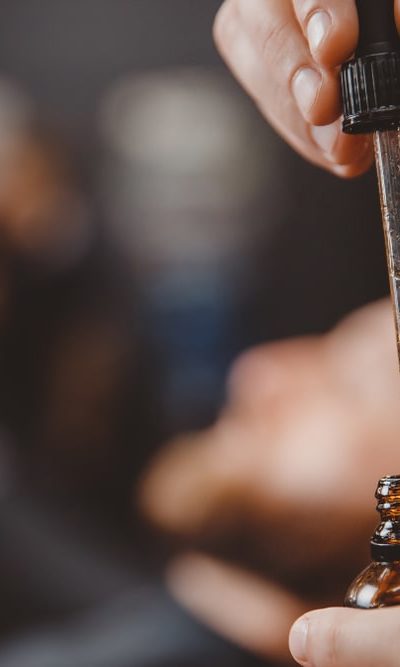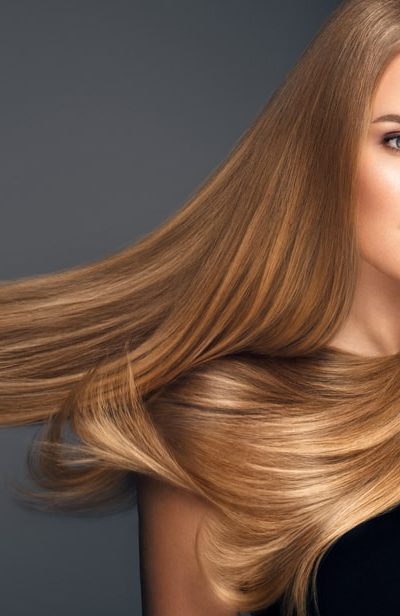
In this section, we’re outlining the basics of how to brush your hair. And we know, you already know how to brush your hair! And of course, this is true, but you’d be surprised to know that there are a few tips and tricks surrounding brushing that you might not know. It’s all about establishing a healthy hair routine, and that starts with the basics.
The thing with hair is that everyone is different. A person with tight curls will have a different hair-care routine than someone with long, straight hair. So, we’re focusing this guide on how to brush your hair based on your hair type. Then, we’ll tackle some FAQs surrounding proper brushing habits.
How-To Brush Your Hair Based on Your Hair Type
Brushing your hair might seem like a straightforward task. Run a brush through it and work out any tangles and knots, leaving natural, free-flowing hair. Easy, right? Well, yes, but there are probably some things you could be doing to improve this process and improve your hair health. We’re going to look into it based on hair type:

Straight Hair
With straight hair, you want to be sure to go easy on your hair. Many people with straight hair also have hair that is quite fine. This means that you must work out knots gently, to avoid stretching or damaging your hair. Luckily, this hair type also tends to have fewer knots overall, so you can afford to take your time.
Curly Hair
Curly hair has its own special type of knots and tangles. And since it tends to flow in different directions, this can be especially difficult hair to brush. The trick with curly hair is to not force it. Go with the direction of your hair and gently work out knots. Even working them out with your fingers can do the trick.
Frizzy Hair
Frizzy hair might be the trickiest type of hair to brush. You might want to get it to make it more flexible and easier to work with. A stronger brush can also help here. Be sure to start at the roots, so that you can spread your hair’s natural oils to the tips of your hair, which will keep hair moisturized and less prone to knots overall.
Damaged Hair
If your hair is very thin or damaged, then implement a brushing routine that takes it easy on your hair. Never brush your hair wet, as it is more prone to damage in this state. Take it easy with knots, and work them out very gently, perhaps with a flexible brush. The key with damaged hair is just to be careful!
How Often Should I Brush My Hair?
Now that we have given some general advice for brushing your hair based on hair type, let’s move on to some general advice about brushing. The first thing that many people get wrong is not knowing how often to brush their hair. Simply put, a lot of people brush their hair way too often.
There can be a temptation to constantly straighten and have your hair looking perfect. But what this might actually be doing is stretching, damaging, and stressing your hair, which can leave it looking damaged and dried out. Overbrushing can actually brush out a lot of your hair’s natural oils as well, making your hair dry out even faster.
The general rule is to brush your hair about once a day. Your goal with brushing should simply be to de-tangle and get your hair free of knots. After that, brushing might be doing more harm than good.
Which Direction Should I Go?
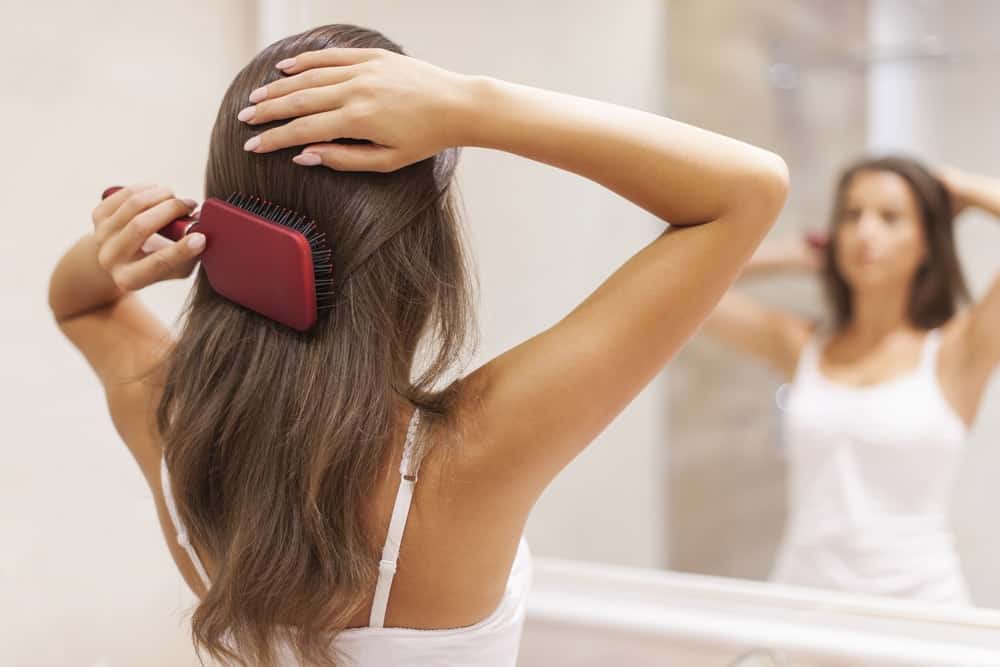
It might seem pretty natural to start at the roots of your hair and work your way out. While this might be effective in certain circumstances, it isn’t generally the proper way to work out tangles. The best way to work out knots is actually to start at the outside of your hair. Get the knots furthest out first, and work your way into the roots.
The main reason for this is that often when people start at the roots, they try to brush their entire length of hair in one long motion. This can actually cause the brush to get caught up, and even create more tangles! By starting from the outside, you ensure that you are only addressing the areas that need it, and you are avoiding any unnecessary brushing that may damage your hair.
Of course, that’s not to say you should never brush in the opposite direction. If this works for you, then that’s fine. Just be sure to pay extra attention to any snags which may be tugging at your hair and creating extra problems.
Brush Before Wash
Another rule that a lot of people often neglect is that it is generally a good idea to brush your hair before you wash it. A big reason for this is that your hair has a lot of natural oils that are washed away when you shampoo your hair. If you brush your hair before you wash, you can spread these oils from the roots of your hair to the tips. These oils are great for your hair health. They give it a natural shine and coat it in a hydrating oil that helps to strengthen it as well.
Another reason to brush before washing is that it is generally inadvisable to brush wet hair. This is because when hair is wet, it is also quite malleable, and easier to damage with a hairbrush. Brushing right after washing can cause quite a bit of damage you didn’t even know you were doing.
Hair Brushes
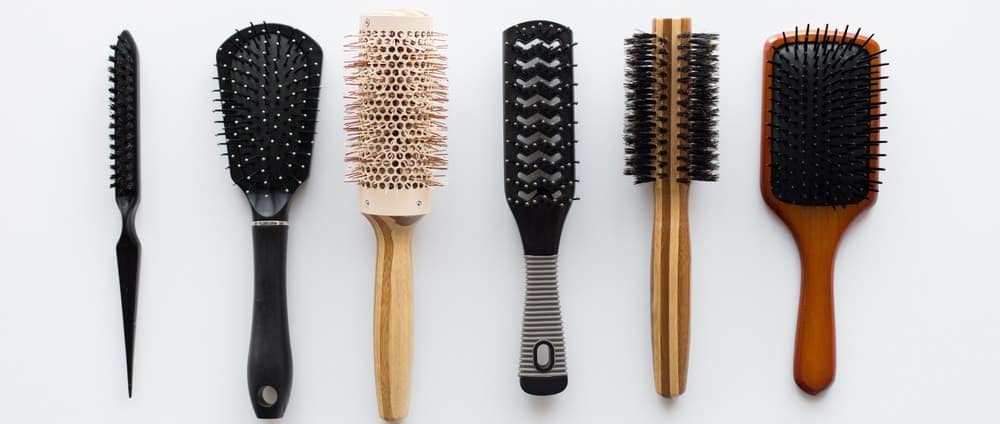
Now that we’ve covered the basics of brushing your hair, as well as some tips and tricks to keep in mind, let’s get to the star of the show – the brush. While it might sound obvious, you’d be surprised at how many people are using a brush that isn’t optimized for their hair type. From the type of bristles to the stem, to the spacing between each bristle, it all makes a difference.
In this guide, we’re going to take you through the major types of hairbrushes, and show you how to pick the proper brush for your hair type.
Types of Hair Brush
First, let’s quickly outline the major types of hairbrushes. After this, we’ll show you how to pick the best one for you:
Detangling Brush
A basic detangling brush comes in many forms and is about as simple as you can get. Made for getting the tricky tangles out of your hair (especially in the shower), a detangling brush has gentle bristles that will help you easily work out the knots.
Paddle Brush
Perhaps the most popular type of brush. A paddle brush has a big, wide head for covering a lot of hair at once. The bristles tend to be pretty firm, but you can buy them with varying degrees of firmness depending on your hair type. The bristles are attached to a cushion of air, which allows them to freely adjust as you brush, matching, and working with the contours and natural flow of your hair.
Round Brush
A round brush typically has strong, condensed bristles to really work out those tangles and knots. Additionally, the bristles completely surround the brush, so you can work out knots from all angles. This is great for smoothing out your hair while also giving it a good bit of volume.
Denman Brush
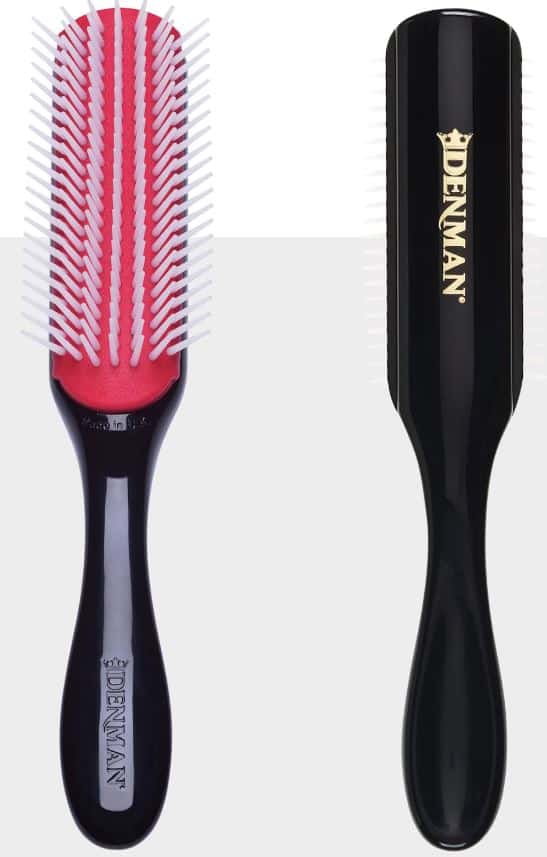
Source: Denman Brush
A Denman brush is most known for its ability to brush curly or wavy hair. It is uniquely shaped to grip your curls and work with them. The bristles are evenly spaced, and also angled to grip the natural shape of curls.
Straightening Brush
A straightening brush combines the utility of a brush with the power of heat to more effectively straighten your hair. Basically, it’s like a flat iron and brush combined. You can get out those knots while also applying heat to keep your hair straight.
Wet Brush

Wet Brushes are quite similar to paddles brushes, but boast a few advancements which set them apart. They use IntelliFlex bristles, which are meant to be flexible enough to avoid damaging hair, yet strong enough to detangle effectively. The bristles are said to be spaced perfectly to avoid yanking at your hair but also to cover a lot of hair at once.
Boar Bristle Brush
A boar bristle brush has thick, condensed bristles that are great for really working out those impossible knots. Best used in conjunction with other brushes, a boar brush is a great tool for especially stubborn hair.
Teasing Brush
A teasing brush is for exactly that! It has thick, condensed bristles that allow you to tease your hair for that extra volume in your ‘dos.
Picking a Hair Brush, Factors to Consider
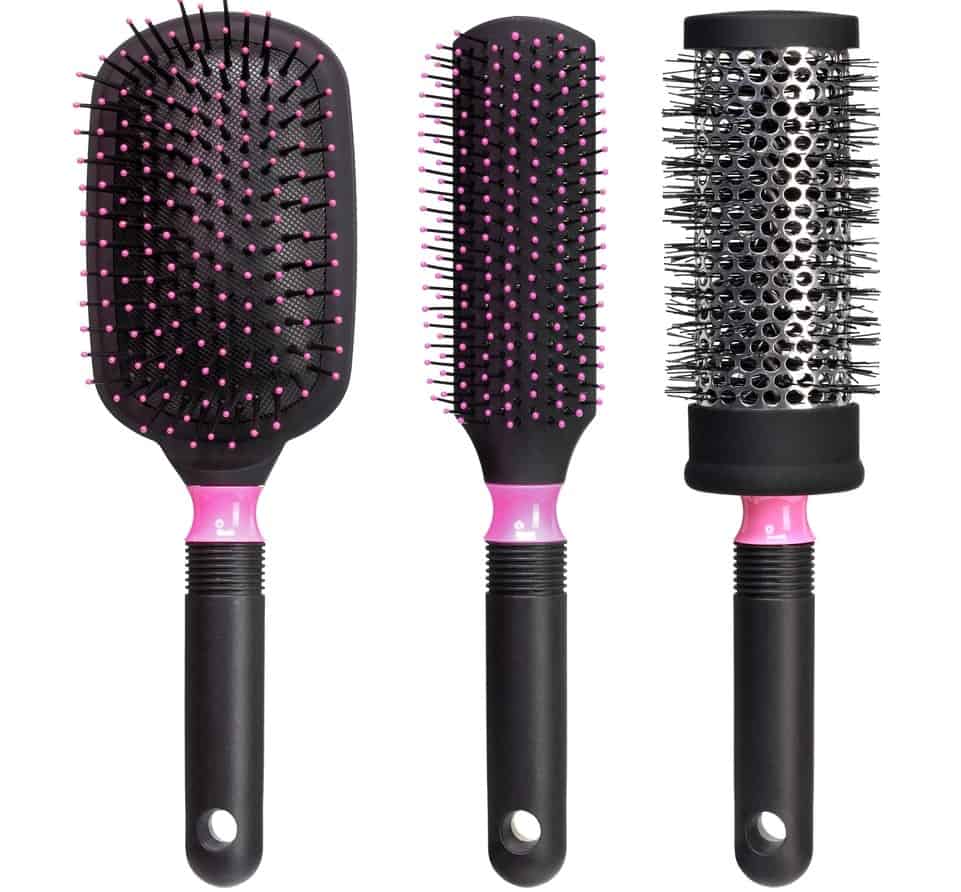
Picking the Best Hair Brush for You
So, you’ve read through the types of brush, a little overwhelming, isn’t it? With all the options available, how are you supposed to know which is right for you? In this section, we show you how to pick a brush based on your hair type.
Remember: There’s No One-Size-Fits-All
Of course, sometimes one hairbrush just won’t do! Depending on how you are styling your hair, where your tangles are, and what your hair needs are at a given time, you might have a use for multiple brush types. Here are some general recommendations of brushes that work well for each hair type:
Thin/Straight Hair
If you have fine hair, the best brush is one that is gentle enough to not damage or pull out your hair, but still strong enough to work out your knots. For detangling and general brushing purposes, we recommend either a paddle brush with flexible bristles or a Wet Brush.
However, sometimes the focus with fine hair is to add that extra volume! For this purpose, a round brush with some tight, strong bristles can do the trick. It smooths out your hair and also yanks it to give it some extra body!
Thick Hair
For thick hair, your main problem might be that your knots and tangles are quite stubborn. For these reasons, you want a brush that can really work these out. Your brush must have strong bristles (nylon should do the trick). For detangling purposes, we recommend a paddle brush with durable bristles or even a detangling brush that has boar bristles.
Of course, if you’re extra concerned about yanking your hair with strong bristles, a softer, more flexible Wet Brush will still work fine, it just might take a little longer.
Curly/Frizzy Hair
It’s no question that curly hair is the most difficult hair to brush. Your hair goes in all directions, and it can become quite tangled and knotted in its own right. A Denman brush is pretty much the go-to brush for curly hair. It is specifically designed to work with the natural flow of curls. The bristles are strong yet flexible and evenly spaced along a curved surface. This allows for maximum grip, but also for natural flow as you work out the tangles in your curls.
Damaged Hair
Damaged hair is the most fragile type of hair to brush. Of course, your number one concern here is to not only avoid further damage but actually to get your hair back on the healing track. You want a nice, basic paddle brush with flexible bristles so that you can gently brush your hair without pulling at it. Additionally, you can get right to the roots and spread your hair’s natural oils, which will help to hydrate your hair and keep it healthy.
Of course, these are just basic tips for different types of hair. Your needs may differ if you are going for a very specific style of hair. Keep these general tips in mind, but don’t forget to consider your own, unique circumstances as well.
What About a Comb?

This article has been exclusively focused on brushes, but what about the other major hair detangling and straightening tool? That’s right, we’re talking about the comb!
While this is mostly a topic for another article, we thought we’d round this one out with a quick look at brushes vs. combs.
As you might imagine, these two tools serve similar functions, but there are a few things that either one does better. Combs are better for getting your hair perfectly straight. Their simple design allows you to achieve that straight-line look. Combs with very fine teeth can also be great at getting out those tough knots. And of course, as with brushes, there are a lot of different comb designs.
But combs are a story for another article. We hope this article has helped you understand all the brush options available, as well as how to properly brush your hair. No matter your hair type, there are a few simple tricks you can take to have your hair looking its best, and we hope we have helped you understand how to get there!


